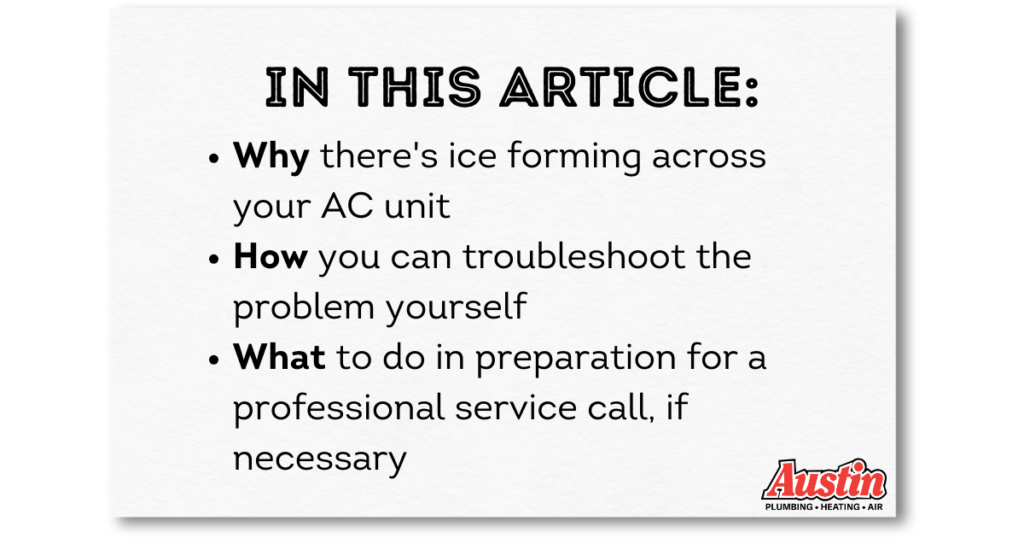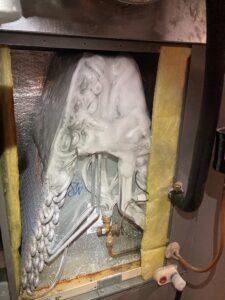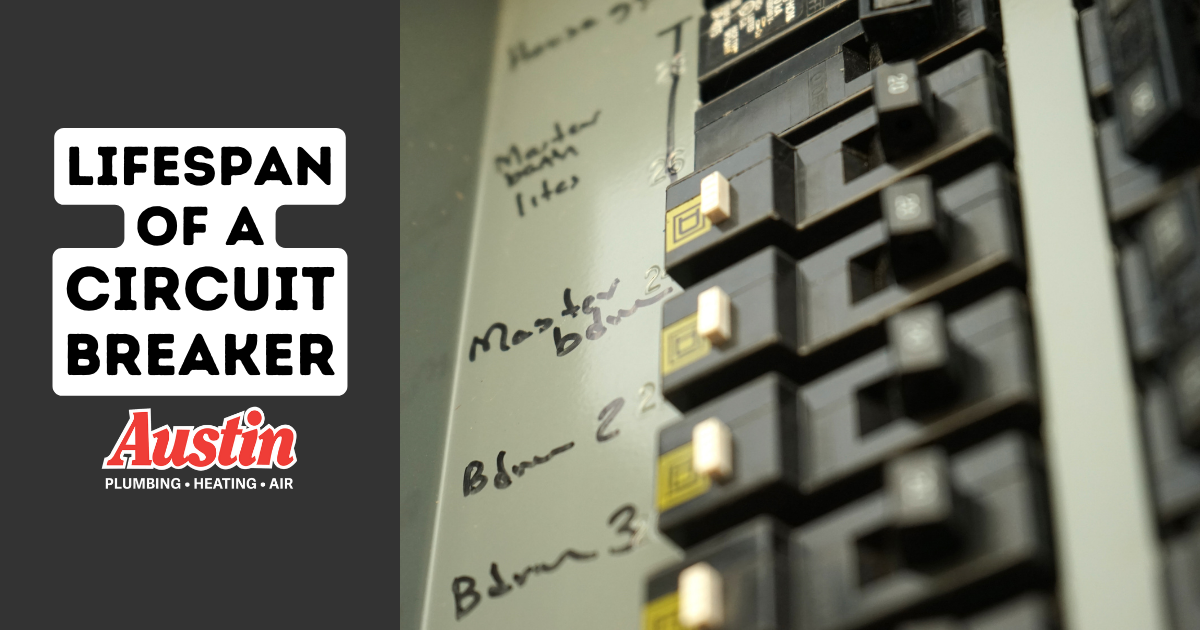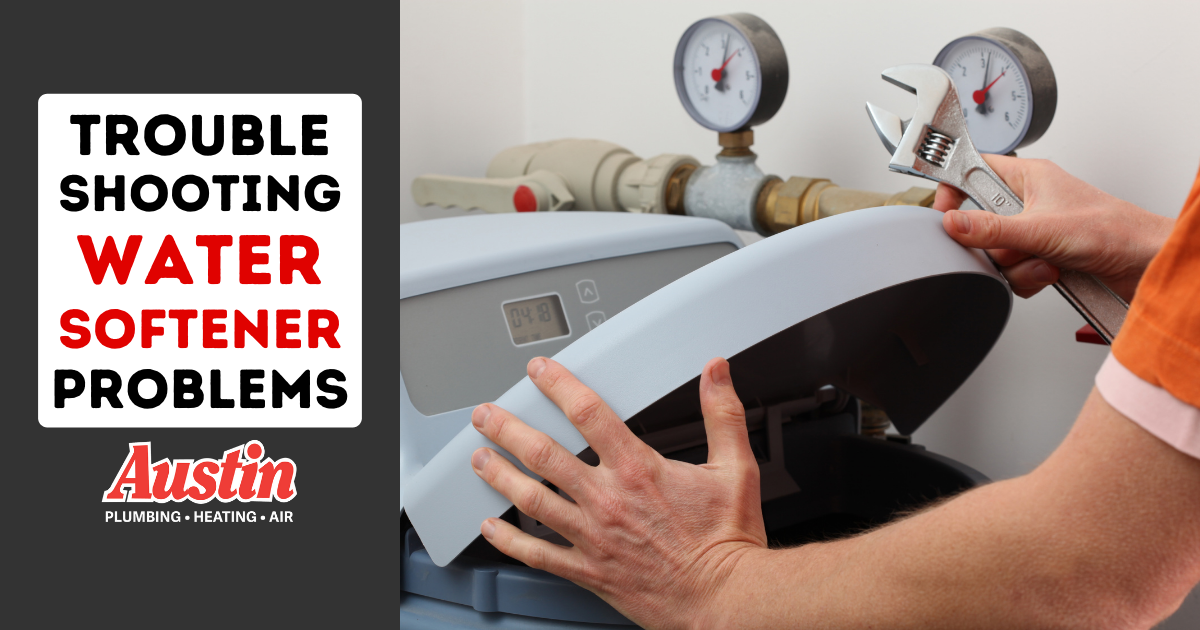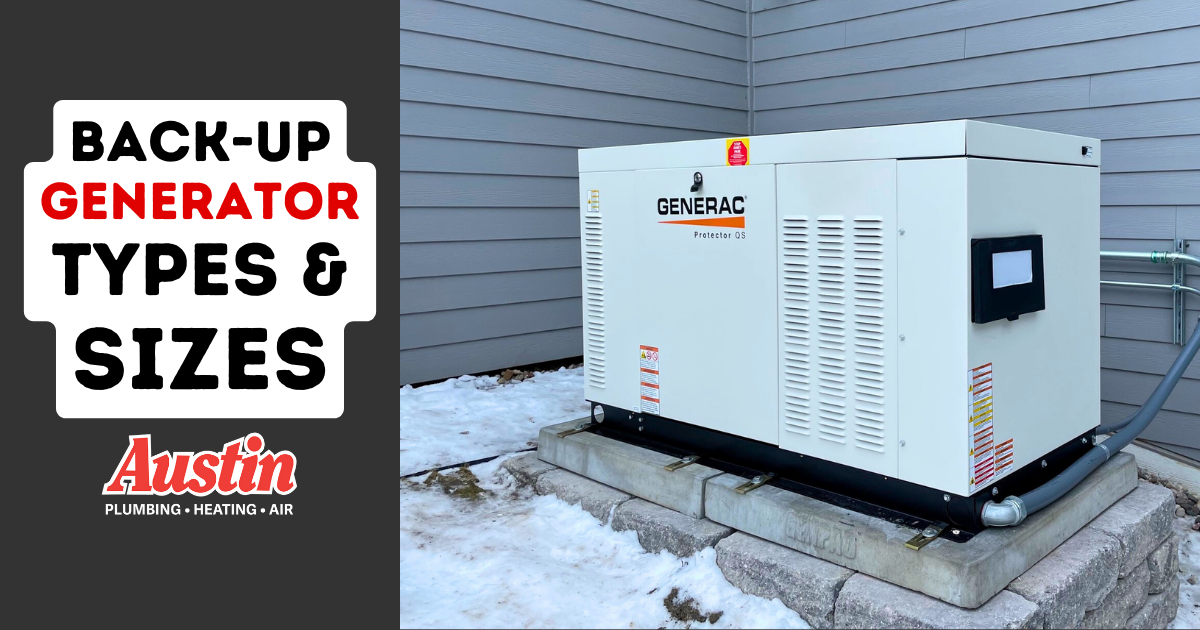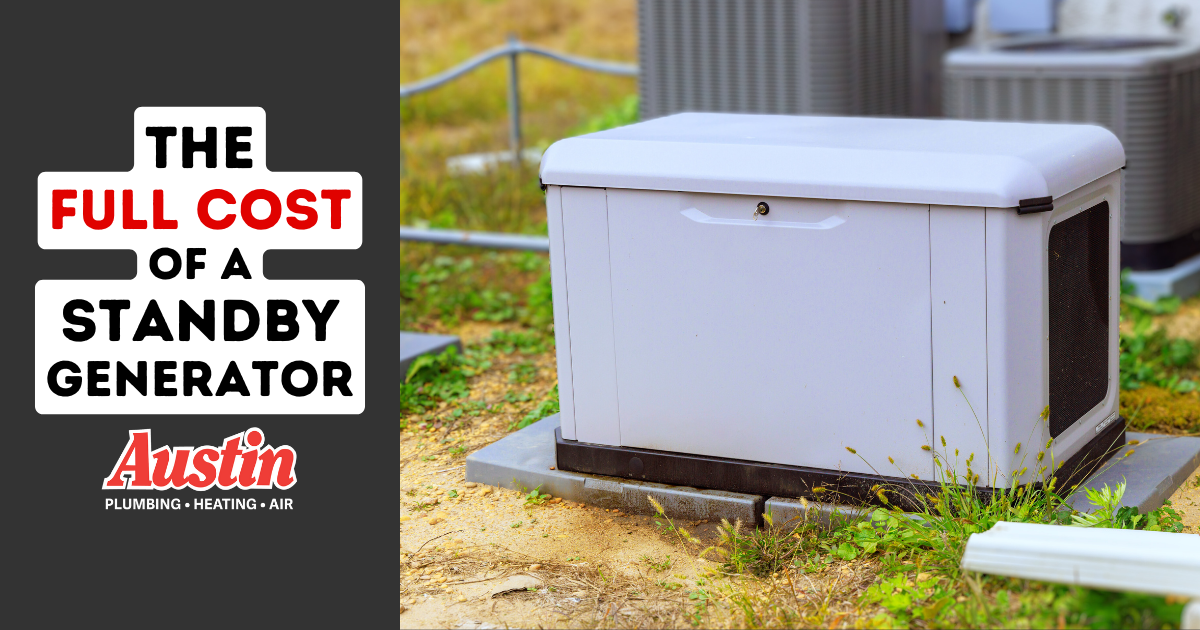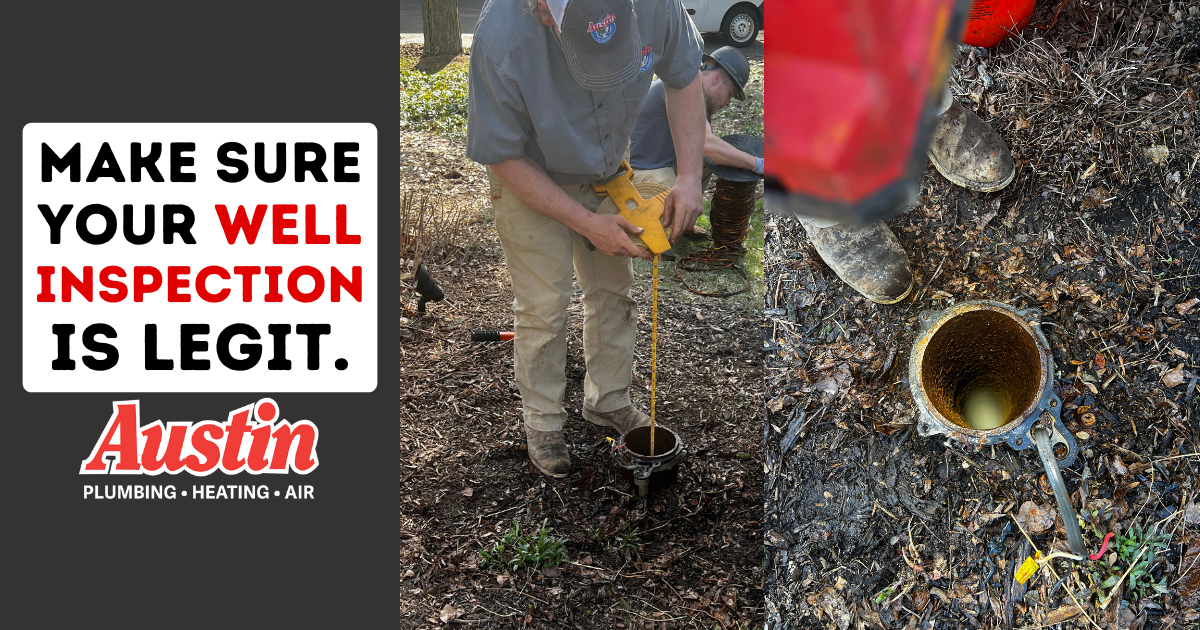Why is There Ice Forming on My Air Conditioner?
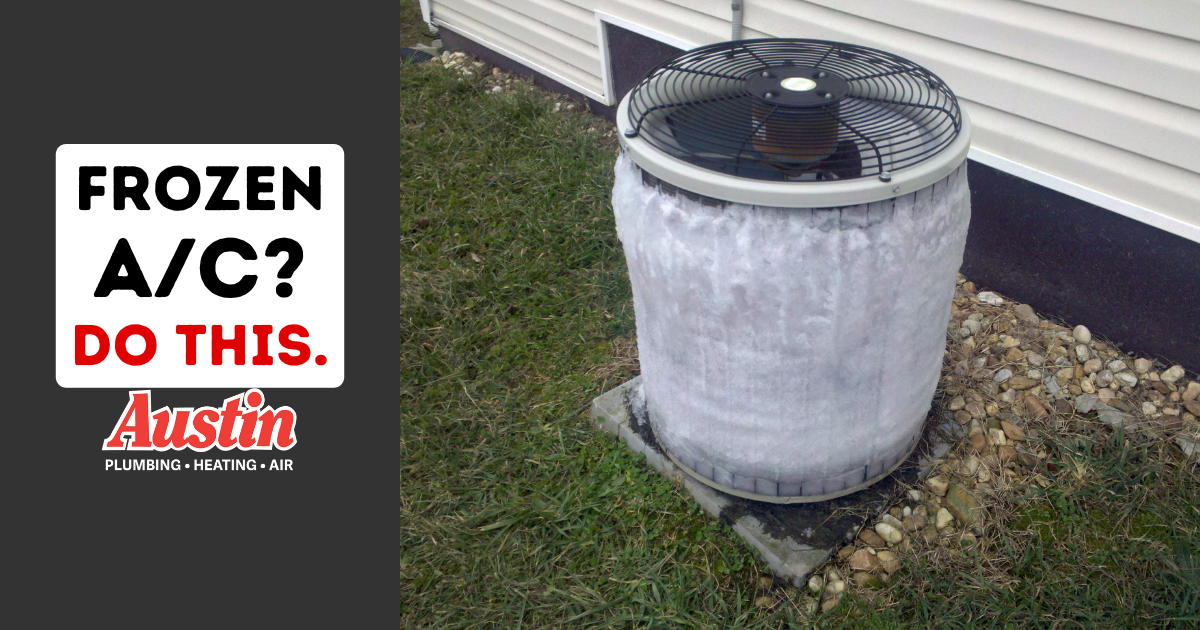
Advice from our resident Master Tradesman for when your outdoor AC unit is frozen, freezing up or covered in ice, and how you can address it.
Ever found yourself squinting at your AC unit and wondering, “Is that…ice?”
You aren’t the only one—and your eyes don’t deceive you. You know what ice looks like. But why would it be covering the air conditioner?
Signs of a Frozen Air Conditioner
Buildup of Frost or Ice on the AC Pipes (Lineset)
“Lineset” refers to the set of refrigerant lines running between your AC and your furnace or air handler. Generally, you should be looking for two copper pipes, one larger and one smaller, which may be bundled together. The larger of the two should be wrapped in insulation material that is typically black in color.
If you can see ice or frost building up on one or both of these lines, you can be pretty certain that the AC unit itself has also frozen up.
Formation of Ice on/around the Air Conditioner Coils (Evaporator Coil)
The evaporator coil is a part of your indoor air conditioning system that sits right atop the furnace. Despite the image of a coil you’re probably picturing, keep in mind that right now, it might just look like a solid block of ice. Don’t forget to check above it, too: you may notice some ice spreading across the ductwork over the furnace, which also indicates a frozen AC.
Ice on/around the Outdoor AC Unit (Condenser Unit)
The fins on the condenser coil may show the most obvious signs of freezing and are therefore a good first place to look. Still, note that visible ice formation on any part of the outdoor AC unit, including the nearby portion of the refrigerant lines, is not normal. It is almost certainly a sign of a frozen air conditioner.
Excess Water Pooling Around/Near the Furnace (Indoors) or the Condenser (Outdoors)
Water is never a good sign; even if you can’t see any ice at this point, what’s going on inside your AC probably isn’t good. Your indoor unit should not even have a hint of water on its surface unless you were wiping it down to clean it with a wet rag.
On the other hand, it’s normal to see some condensation on the outdoor portion of your AC. However, you should be alarmed if any water has started visibly pooling around the base. This is a surefire sign that the unit did freeze up at some point and has now begun to thaw. (Simply letting it thaw does not guarantee your AC will resume functioning as normal.)
What Makes AC Coils Start Freezing?
- Lack of airflow. Airflow throughout the AC system itself is critically important. If it can’t breathe, it won’t work.
A clogged air filter is the most common culprit behind a stifled AC. The good news about this issue is that it’s pretty easy to resolve. However, plugging of the condenser coil can be harder to deal with. There is also the possibility of furnace blower failure, which would definitely require a service call.
- Low refrigerant level (low on freon or AC low on charge). If left without enough refrigerant fluid, the entire air conditioning system is liable to freeze up eventually. Don’t let this problem go unmanaged!
- Meter failure or blockage. It may be the case that your AC is charging without issue, but the refrigerant meter isn’t working properly. This meter, called a TXV or a piston, is a device made to regulate the flow of refrigerant through the AC coils. If that device gets blocked up or fails, it can cause a number of problems within the greater AC system, including but not limited to freezing over.
- Mechanical failures within the AC. In addition to the refrigerant meter, there are many other critical components of your central air conditioner that, when broken, can lead to total system failure. An overworn AC compressor, capacitor, or condenser fan are just a few examples of mechanical failures that can also lead to freezing.
How to Fix a Frozen Air Conditioner
Shut it off and let it thaw out.
Letting a frozen AC keep running is the worst mistake you can make; it will only cause further problems.
From the thermostat, set the AC to “OFF” and the fan to “ON”. This will help speed up the process of thawing a frozen AC coil.
In this situation, don’t be surprised if you see water where it shouldn’t be. As the ice begins to melt on the coils and refrigerant lines, they will drip, and not all of the drippage will land in the AC drain pan. It may land on the floor around the furnace instead, but this is nothing to worry about. It’s only problematic when discovered as a sign that this process already took place without your knowledge. A frozen AC must thaw at some point—what’s important is to deal with it as early as possible.
Replace the Furnace Filter
A clogged or “plugged” furnace air filter is the leading cause of AC freeze-ups. Changing the filter on your outdoor AC unit is a simple process, and you can even diagnose the issue yourself most of the time.
Test the System (Moment of Truth)
After following all of the steps listed above, cross your fingers and turn the AC on again. If it comes back on, runs, and doesn’t ice back up after several hours, you’re probably in the clear. Congrats!
When Should I Call a Professional for AC Repair Services?
You should call us if:
- This has happened before. Don’t repeat the troubleshooting cycle on an AC that freezes more than once—just call us before things get worse!
- You discovered no issues during your step-by-step AC check. For example, if the air filter appears perfectly clean and clear—especially if it was recently replaced—the problem is bound to be something deeper.
Prepping for an Air Conditioner Repair Visit: Important Steps to Take Before Your AC Guru Arrives
Although we provide same-day and emergency AC services, there is little we can do before a frozen system has the chance to thaw. Rather than having us turn on the heat and wait with you, it’s better to save yourself some money by getting this out of the way in advance.
Thawing the air conditioner only takes a couple of hours. Here’s how make sure it goes right:
- Turn off the AC two or three hours before the scheduled arrival time (if it wasn’t shut-down already). To do this, switch the thermostat from “Cool” mode to the “OFF” position.
- Next, turn the thermostat’s fan setting (not the AC setting) to “ON”. This will cause the furnace fan to blow without any cooling output. The increased airflow will help to melt any ice or frost.
- Make a note of anything else you noticed, as well as any other fixes you tried, for your repairman to see before getting started.
Finally, sit back and relax until one of our AC gurus arrives to take care of you! If you haven’t given us a call yet, don’t wait for things to get worse—call (262) 367-3808 today.
